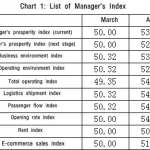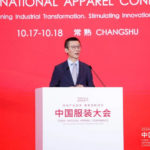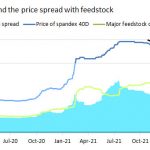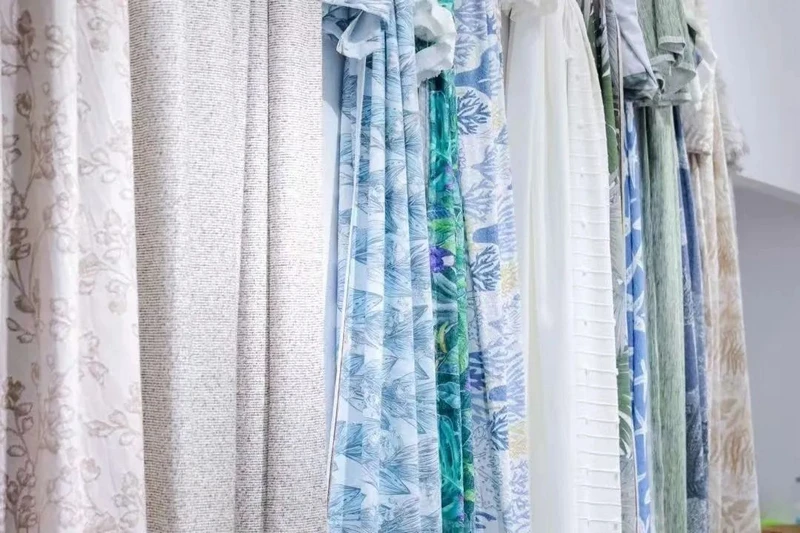 China’s textile and garment industry under the shadow of “reciprocal tariffs”
China’s textile and garment industry under the shadow of “reciprocal tariffs”
Beijing, China – [April 14, 2025] – The China National Garment Association today issued a comprehensive statement addressing the current challenges and the inherent resilience of China’s textile and garment industry, particularly in light of the renewed focus on so-called “reciprocal tariffs” by the United States. The Association highlighted China’s enduring role as a vital contributor and participant in the global textile and apparel market, consistently meeting international demand with high-quality products and services. This has not only provided American consumers with diverse purchasing options but also facilitated cross-border e-commerce and small packages that have directly benefited millions of small and medium-sized businesses and ordinary families across the United States.
Faced with what is described as unilateral bullying from the United States, various organizations and companies within the Chinese textile industry have responded decisively, employing various means to express China’s firm stance of boycotting such measures. The fundamental reality, as underscored by industry analysis, is that the United States market remains heavily reliant on Chinese textiles. Approximately 95% of the clothing sold in the US market is imported, with China being the leading source at around 30%, followed by Vietnam (13%), India (8%), Bangladesh (6%), and Indonesia (5.5%). From everyday clothing to advanced industrial textiles, Chinese products are pervasive in the US market. China’s position as a global leader in textiles is firmly established through its complete industrial chain, robust production capacity, and sophisticated technological innovation capabilities. Key industry clusters, such as Keqiao in Shaoxing, exemplify the strong international competitiveness of Chinese textile products.
While acknowledging that the Sino-US trade dynamics have impacted some garment companies’ orders in the United States, the industry is actively pursuing strategies to navigate these challenges. Pan Jianhua, chairman of China Textile City Group, stated in an interview that the focus is on tapping into the potential of both domestic and international dual circulations. This involves expanding overseas trade bases, enhancing foreign trade services including logistics and warehousing, and leveraging overseas platforms to grow business. Furthermore, the commitment to the three major strategies of “market, digital, and investment” remains steadfast, integrating data resources and prioritizing the digitalization of transactions to use clothing sales as a driver for fabric sales and strengthen support for internal circulation.
Industry veterans express strong confidence in the continued strength of China’s textile exports. One entrepreneur with extensive experience in the textile sector, whose company primarily exports plush products with an annual value of about 100 million US dollars, highlighted that their textile exports have consistently increased year by year, regardless of shifts in Sino-US relations. This entrepreneur confidently asserted that US tariffs would not alter their company’s textile exports or China’s textile exports globally, attributing this to the irreplaceable contributions China’s textile industry has made over decades. China’s dominance is evident in its production of 70% of the world’s chemical fibers and natural textile fibers. The country possesses a uniquely complete production chain, encompassing everything from textile machinery and equipment to textile auxiliaries and finished textiles. The prevailing sentiment is that the Chinese textile industry is well-equipped to handle high tariffs imposed by the United States, even the prospect of decoupling, and that the added tariff costs may ultimately be borne by American consumers.
International perspectives support the view that transitioning away from Chinese textiles presents significant difficulties. KV Srinivasan, president of the International Textile Manufacturers Federation (ITMF), noted that while US apparel importers are exploring alternative sourcing options in countries with lower tariffs, many of these alternatives face higher production costs and often lack the necessary product variety or production capacity. Attempting to reshore apparel manufacturing to the United States also presents substantial hurdles, including significantly higher labor costs compared to other nations. Moreover, a considerable portion of the textiles required for apparel production would still need to be imported, likely at increased costs. The United States also faces a shortage of skilled workers in the apparel industry. The likely outcome of either increased import tariffs or costly domestic production is anticipated to be higher apparel prices, thereby fueling inflation.
While tariffs may cause some impact, the industry remains resilient, with the view that “the sky won’t fall”. China, as a super-large economy, possesses significant capacity to withstand pressure. In recent years, active efforts to build a diversified market have successfully reduced dependence on the US market. An article in the People’s Daily highlighted that China’s exports to the US decreased from 19.2% in 2018 to 14.7% in 2024, indicating that a decline in exports to the US will not have a subversive impact on the overall economy.
Numerous textile companies and institutions are actively addressing the potential impacts and implementing relevant response strategies. Bailong Dongfang, a leading colored yarn company, stated that having no direct export business to the United States in the past three years means the tariff increase has no direct impact on their operations. However, the company anticipates a significant impact on the global textile and clothing supply chain, recognizing that as an upstream company, they will be indirectly affected. In response, Bailong Dongfang is actively exploring other emerging markets and enhancing the company’s irreplaceability in the global textile supply chain through innovative research and development of new colored yarn products, technological upgrades, improved product quality, and cost reduction measures to cope with potential trade risks. Similarly, Weixing Co., Ltd., a leading clothing accessories company, noted that its international business exports are primarily concentrated in countries with low labor costs such as Bangladesh and Vietnam, resulting in a very low volume of direct exports to source countries in Europe and the United States. Consequently, the direct impact of tariff adjustments on goods like ready-made clothes in terminal consumer countries or regions on the company’s business is limited. However, the company acknowledges that the terminal consumption boom and changes in the international trade environment will inevitably have a certain impact on the textile, clothing, and apparel industries. While the company’s cumulative order amount has continued to grow year-on-year, the cautious sentiment in the downstream industry due to overall factors presents some short-term pressure on order intake.
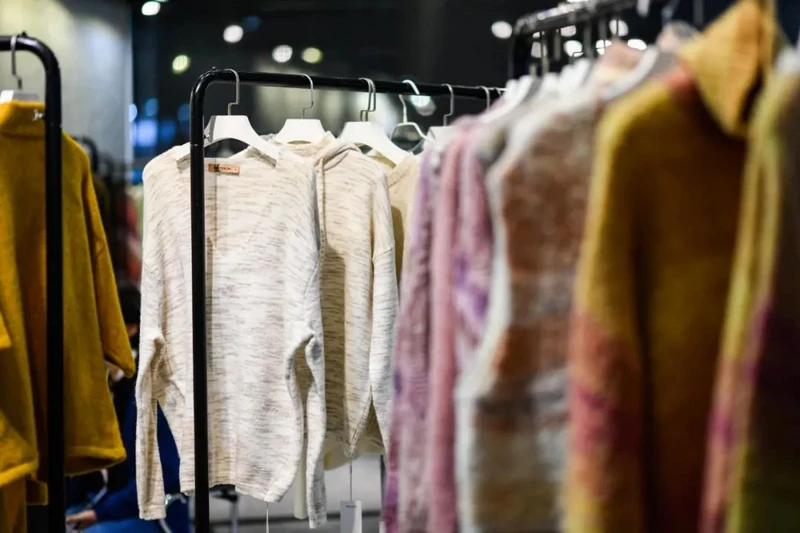
For exporters operating through platforms like Yiwu Small Commodity City, where textiles and clothing are major export categories to the US, merchants are generally addressing potential profit margin compression by adjusting commodity prices, increasing product added value, optimizing production processes, and strengthening overall enterprise competitiveness. Rebecca, a company with a significant international presence, including being described as the “wig king,” reported average annual exports to the United States of approximately 300 million yuan, representing about 25% of their sales revenue. Due to diversified sales across Europe, Africa, South America, and China, the impact of the US tariff increase on Rebecca’s business is considered limited and generally controllable.
Recent data indicates that from January to February 2025, China’s cumulative textile and clothing exports experienced a year-on-year decrease of 4.5%, with textile exports falling by 2% and clothing exports by 6.9%. The increase in tariffs is expected to significantly reduce the price competitiveness of Chinese textiles in the US market, potentially leading to some orders being redirected to lower-cost countries such as Vietnam and Cambodia. Small and medium-sized enterprises are identified as being particularly vulnerable, as rising costs due to tariffs disproportionately affect those with low profit margins, potentially accelerating industry consolidation.
Within the textile sector, the linen textile industry holds an important position in the export landscape. Analysis of 2024 data reveals that while China’s linen yarn exports to the United States accounted for only a negligible 0.024% of the total export volume and linen fabrics accounted for 0.910%, linen bedding exports to the United States were significantly higher at 33.353%. These figures indicate that while the impact of tariffs on primary products exported to the US is minimal, the US market share for terminal linen products is relatively larger.
In navigating the landscape shaped by high tariffs, relevant experts emphasize the critical need for textile and clothing export enterprises to strengthen cooperation and coordination with upstream and downstream partners within the industrial chain. This involves establishing long-term and stable relationships with raw material suppliers to ensure consistent supply and quality. Collaboration with printing and dyeing, finishing, and other enterprises is crucial for enhancing the overall quality and added value of fabrics. Maintaining close communication with clothing manufacturers is also vital to promptly understand shifts in market demand and adjust product structures accordingly. These collaborative measures are seen as essential for enterprises to maintain competitiveness and achieve sustainable development in a complex international trade environment.
Concurrently, expanding domestic demand is highlighted as a crucial long-term strategic imperative, leveraging the inherent advantages of the domestic super-large-scale market. The additional tariffs imposed by the United States, while increasing the cost-effectiveness of some imported high-end textile materials, may simultaneously create opportunities and alternative space for domestic high-end textiles. This aligns with a clear trend of domestic substitution observed in recent years in markets like China’s carbon fiber sector. Increased difficulty in importing carbon fiber during the epidemic and export restrictions from countries like Japan and the United States have provided significant space and development opportunities for domestic carbon fiber production.
Ultimately, the industry’s response to the tariff impact is characterized by a proactive approach and a focus on internal strength. Companies are urged to increase research and development efforts and introduce more competitive products to effectively navigate the current challenges and position themselves for continued success.

